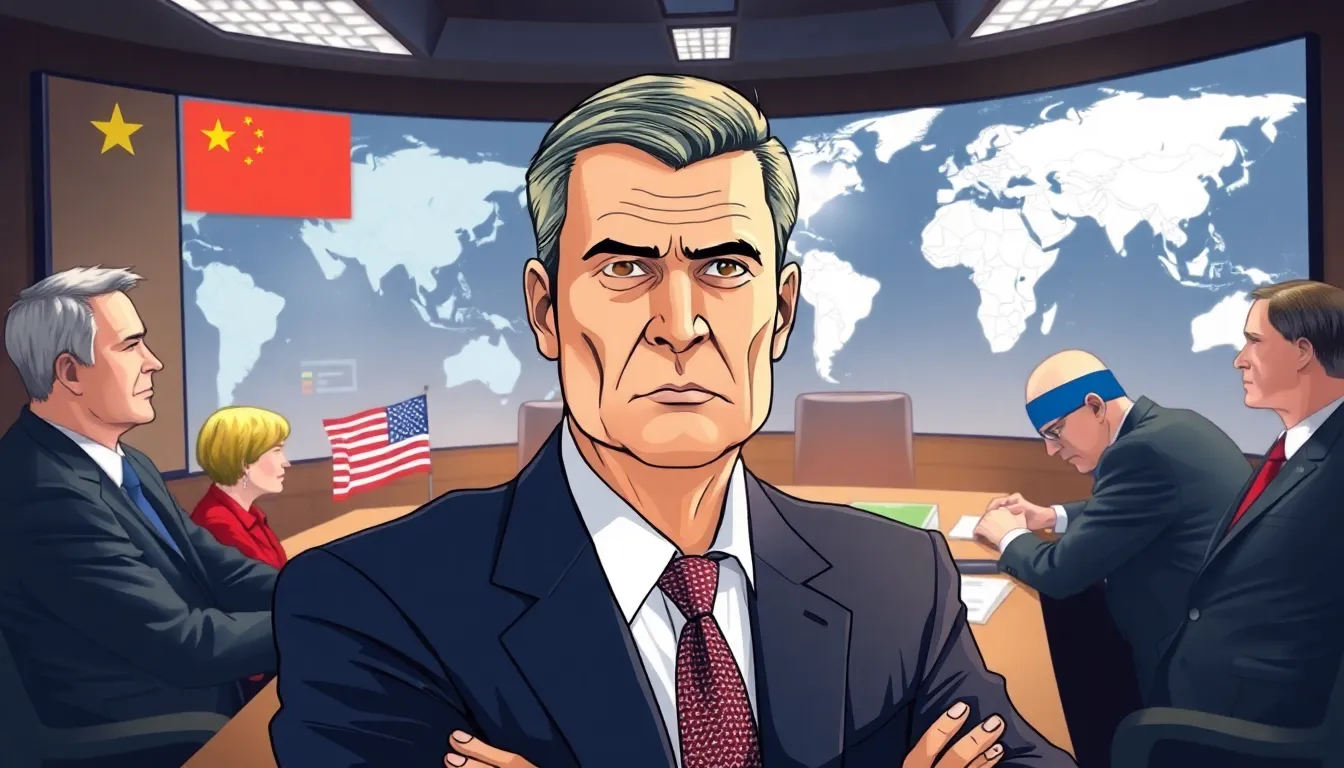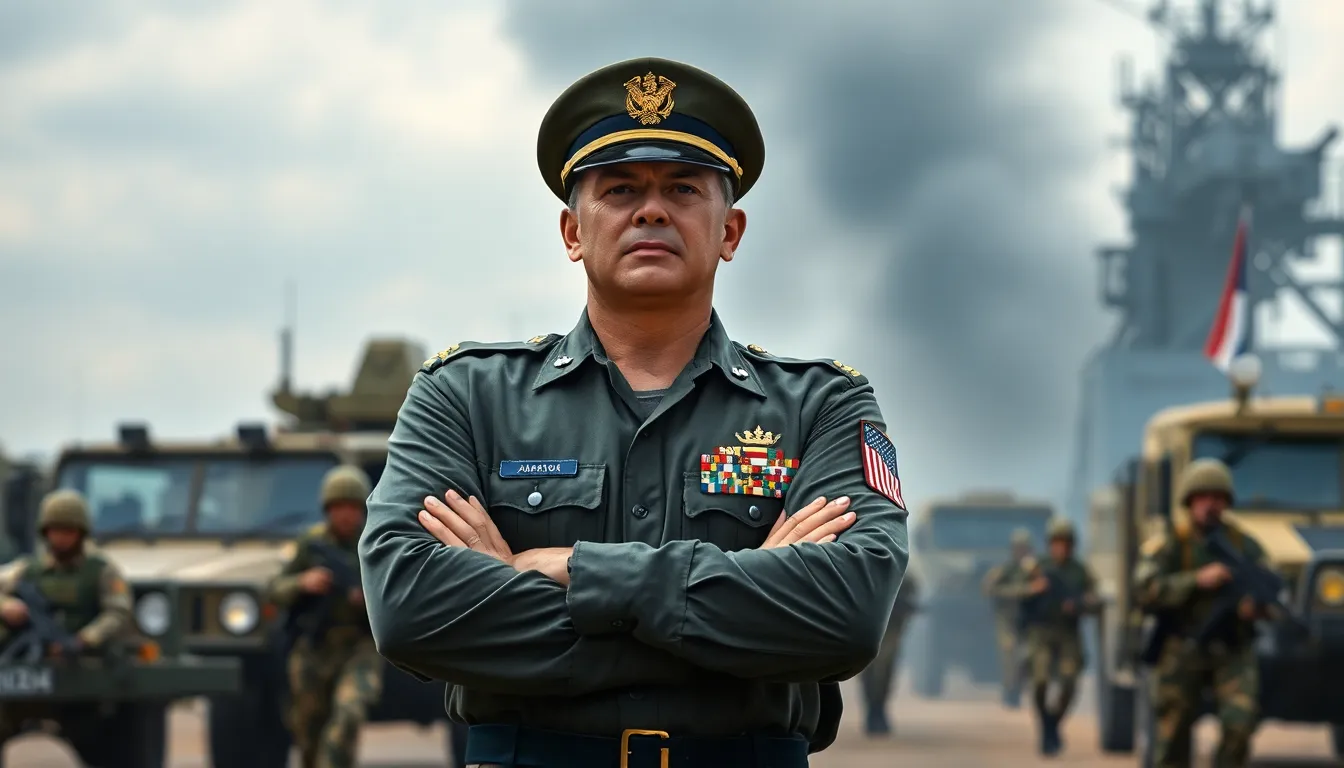In a world where headlines often feel like they’re ripped from a dystopian novel, the chatter about World War Three has reached a fever pitch. With tensions rising faster than a cat meme going viral, it’s hard not to wonder if we’re living in a real-life game of Risk. As nations flex their muscles and social media feeds explode with speculation, staying informed is more crucial than ever.
But don’t panic just yet! While the idea of global conflict might sound like the plot of a blockbuster movie, understanding the current landscape can help keep fears at bay. This article dives into the latest news and insights about potential conflicts, helping you navigate the chaos with a sense of humor and a sprinkle of optimism. After all, if history teaches us anything, it’s that the world has a knack for surprising us—sometimes in the most unexpected ways.
Table of Contents
ToggleOverview of World War Three News
Current events regarding World War Three highlight escalating tensions among global powers. News reports frequently focus on military movements, diplomatic negotiations, and statements from political leaders. Various regions face conflicts, with sources noting hotspots in Eastern Europe, the South China Sea, and the Middle East. Specific military exercises, such as those conducted by NATO and Russia, draw significant attention from analysts and the public.
Media coverage emphasizes economic sanctions and their impact on global markets. Analysts explore how trade relationships shift in response to these tensions. Recent developments include increased arms sales and enhanced defense spending by several nations. Reports link these actions to fears of potential conflict, underscoring the significance of preparedness.
Public sentiment shows an increase in anxiety over the threat of large-scale war. Surveys indicate a growing concern among citizens regarding their governments’ ability to manage international relations. Specific events, like military skirmishes or provocative statements, often fuel this unease.
International organizations, including the United Nations, advocate for diplomacy to address conflicts. They push for dialogue as a means to prevent escalation. Many experts stress the importance of understanding historical contexts, which often shape current situations.
Staying informed through reliable news sources allows individuals to grasp complex geopolitical issues. Citizens are encouraged to engage with news critically while seeking diverse perspectives. Regular updates from authoritative outlets can assist in following developments as they unfold.
Current Global Tensions

Current global tensions reveal escalating concerns about potential conflict among world powers, prompting widespread scrutiny of military and diplomatic actions.
Key Regions of Concern
Eastern Europe remains a crucial area of focus. Reports detail NATO’s military exercises alongside Russia’s significant maneuvers, heightening anxieties. In the South China Sea, territorial disputes and naval confrontations continue to draw international attention. The Middle East also presents significant risk due to ongoing conflicts and strategic alliances. Increased military presence in these regions illustrates the delicate balance nations strive to maintain amidst rising tensions. Reports of military skirmishes add to public unease, reinforcing the need for vigilance.
Major Players Involved
Key players include the United States, China, and Russia. Each nation has adopted a unique approach to managing its national interests while navigating complex geopolitics. The U.S. consistently emphasizes military readiness and alliances. China focuses on expanding its influence in the Asia-Pacific region. Russia, on the other hand, asserts its role as a major force in Eastern Europe and the Middle East. These dynamics complicate relationships, with regional partners and rivals reacting to one another’s strategies. Public sentiment about these players reflects heightened anxiety, prompting calls for diplomatic solutions.
Recent Developments
Global tensions remain high, with several recent developments shaping the landscape of potential conflict.
Historical Context
Tensions among nations are not new. Events from the Cold War illustrate how geopolitical rivalries can spark threats of large-scale conflict. Flashpoints exist today much like they did decades ago, reminding observers of the historical dynamics at play. Analysts emphasize the importance of understanding these contexts, especially given how historical decisions shape current events. In modern times, nations continue to navigate complex relationships influenced by past interactions. Continued dialogues emphasize the need for reflection on history as a means to prevent future escalation.
Notable Incidents and Events
Recent incidents highlight the volatility present in international relations. Military exercises in Eastern Europe saw NATO and Russian forces operating in proximity, generating significant media coverage. In the South China Sea, naval encounters raised alarms over territorial claims, capturing global attention. Leaders’ statements often provoke responses, further inflaming existing tensions. Concurrently, reports of skirmishes in the Middle East exhibit the ongoing struggles for power and influence in volatile regions. Every incident serves as a reminder of the delicate balance that nations strive to maintain, underscoring the need for ongoing diplomatic efforts.
Analysis of Potential Scenarios
Various scenarios emerge as international tensions persist. Understanding military strategies and political implications is crucial for grasping potential outcomes.
Military Strategies
Military strategies play a significant role in shaping global conflicts. NATO’s readiness initiatives illustrate an emphasis on defense against aggression. Concurrently, Russia’s maneuvers in Eastern Europe signal assertive territorial claims. The South China Sea showcases naval exercises, with the U.S. reinforcing its presence to counterbalance China’s influence. Arms deals among nations increase rapidly, demonstrating proactivity amid these uncertainties. Analysts assess these strategies, highlighting the interconnectedness of military movements and geopolitical stability. Awareness of diverse military doctrines assists in forecasting possible escalations and responses in this volatile landscape.
Political Implications
Political implications of these tensions reflect a complex interplay among major world powers. Decision-making processes within the U.S., China, and Russia influence international relations directly. Heightened rhetoric and confrontational gestures can shift alliances and exacerbate fears of conflict. European nations face the challenge of balancing national interests with collective security under NATO. High-stakes negotiations between rival states demand diplomacy to prevent escalation. Public opinion increasingly shapes policies, pushing leaders to address constituents’ concerns about war risks. The role of international organizations in mediating disputes becomes vital for maintaining global stability amid rising tensions.
Public Sentiment and Reactions
Growing anxiety permeates public sentiment around the potential for World War Three, with surveys indicating significant concerns about governmental management of international relations. Many fear that geopolitical tensions may spiral out of control, leading citizens to call for dialogue and diplomacy as crucial solutions. Increased media attention towards military movements highlights this unease, as reports of NATO and Russian exercises in Eastern Europe contribute to a climate of apprehension.
Many observers point to recent provocative statements from political leaders, which intensify public fears and reinforce the urgency for diplomatic engagements. Events such as naval encounters in the South China Sea not only capture headlines but also evoke concerns about territorial integrity and national sovereignty. Citizens express frustration over perceived inaction by governments, urging leaders to prioritize peace over escalation.
Prominent figures within international organizations advocate for open discussions to avoid conflict, emphasizing that proactive measures can help de-escalate tensions. Historical contexts remain important; experts suggest that understanding past interactions can illuminate current dynamics among global powers. Political strategies from the United States, China, and Russia reveal contrasting approaches—some emphasize military readiness while others focus on regional influence.
Public discussions often center around the implications of these international actions. Military strategies influence domestic perceptions, leading to an increase in defense spending and arms sales that heighten fears of impending war. As public discourse evolves, citizens increasingly seek information from reliable sources to navigate these complex situations with greater awareness and clarity.
The current global landscape is marked by uncertainty and tension as nations navigate complex relationships. Staying informed is crucial for understanding the dynamics at play and recognizing the potential for both conflict and resolution. While fears of World War Three loom large, proactive dialogue and diplomacy remain essential tools in preventing escalation.
As events continue to unfold in key regions, the importance of vigilance cannot be overstated. By engaging with diverse perspectives and reliable news sources, individuals can better comprehend the intricacies of international relations. Ultimately, history shows that outcomes can shift dramatically, often in unexpected ways, reminding everyone that hope and resilience are vital in these challenging times.



